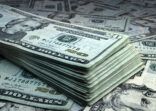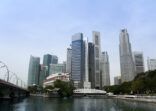Inflows into fixed income funds available for sale in Thailand reached $21.9bn, the highest of all asset classes, Morningstar data shows.
Equity funds were shunned by investors. Inflows were only around $232m in 2016 compared to $5.64bn the previous year.
“The market has been volatile and many unexpected events happened last year,” said Rui Ming Tay, Singapore-based senior analyst at research firm Cerulli Associates. “As such, investors were hurt by the underperformance in equities, especially foreign equity funds.””
Assets in fixed income account for 54% the industry’s AUM versus equity funds (22%):
|
Broad category |
Total fund size ($bn) |
Market share |
Sum of 2014 flow ($bn) |
Sum of 2015 flow ($bn) |
Sum of 2016 flow ($bn) |
|
Allocation |
7.232 |
7% |
1.195 |
0.399 |
2.745 |
|
Commodities |
1.091 |
1% |
0.082 |
0.098 |
-0.079 |
|
Equity |
23.636 |
22% |
4.330 |
5.639 |
0.232 |
|
Fixed Income |
58.481 |
55% |
12.366 |
11.986 |
21.885 |
|
Miscellaneous |
0.249 |
0% |
-0.062 |
-0.033 |
0.147 |
|
Money Market |
15.813 |
15% |
-1.602 |
1.242 |
-0.655 |
|
Grand Total |
106.501 |
100% |
16.311 |
19.330 |
24.275 |
Source: Morningstar
According to Tay, Thai investors have become more cautious than in previous years, which explains the significant shift toward fixed income, as well as multi-asset funds.
“It was only in the fourth quarter that there was a gradual pick-up in equity funds in terms of subscriptions,” he said.
Foreign fund demand
The popularity of fixed income funds in Thailand was buoyed by global fixed income funds, which had inflows of around $10.8bn in 2016.
Investment funds that invest in foreign securities have been popular in Thailand over the last few years, Cerulli’s Tay said. “It’s more of a shift of demand toward foreign fixed income funds in 2016.”
Citing data from Thailand’s Association of Investment Management Companies, Tay said in 2016, foreign fixed income assets were up 20% year-on-year to THB581.2bn ($16.6bn).
Tay added that based on the firm’s conversations with asset managers, more offshore funds will be launched in Thailand this year.
“Demand for foreign fixed income and balanced funds are likely to persist in the first half of the year,” Tay said, noting that Cerulli only tracks offshore funds that are launched via the master-feeder structure.
In Thailand, foreign funds for sale have been required to come in through a master feeder scheme. However, relaxed regulations in January last year allows qualified Thai investors to buy offshore funds directly from a broker or bank, avoiding the master feeder scheme, as reported.
However, the take-up for those offshore funds could be slow as they have to compete with the locally-wrapped funds that are already available in Thailand, Kittikun Tanaratpattanakit, said in a previous FSA interview.
“We are definitely seeing more deregulation in Thailand to help boost local managers’ competitiveness, to enhance investment flexibility, and to catch up with international investment guidelines and foreign market developments,” Cerulli’s Tay said.
For example, Thailand’s Securities and Exchange Commission has plans to allow the sale of hedge funds to ultra-high-net-worth investors this year, he added.
Fixed income in Thailand
| Sub-asset categories | Total fund size ($bn) | Market share | Sum of 2014 flow ($bn) | Sum of 2015 flow ($bn) | Sum of 2016 flow ($bn) |
| Global Fixed Income |
13.43 |
13% |
0.33 |
-0.16 |
10.79 |
| High Yield Fixed Income |
8.39 |
8% |
0.81 |
0.74 |
6.44 |
| Thailand Fixed Income |
36.55 |
34% |
11.27 |
11.43 |
4.62 |
| Moderate Allocation |
3.63 |
3% |
1.16 |
0.18 |
1.35 |
| Aggressive Allocation |
3.09 |
3% |
-0.01 |
0.16 |
1.23 |
Source: Morningstar
Thailand’s fund industry resembles what is happening in the region as a whole. According to Morningstar data, fixed income funds that are for sale in Asia represented the biggest net inflows in 2016 – at around $46bn, while equity funds had the largest net outflows of around $53.3bn, as reported.

















